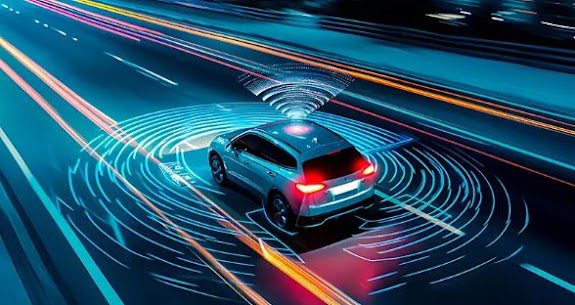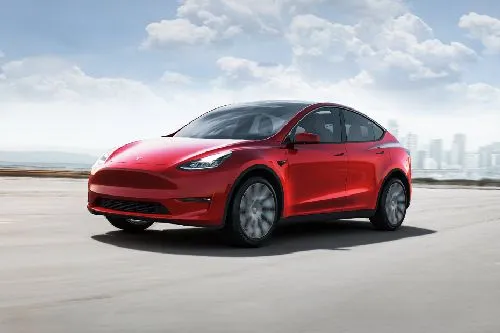
The advent of autonomous vehicles marks a revolutionary shift in the transportation landscape, promising a future where human drivers may become obsolete. As we delve deeper into the Future of Driverless Cars, it becomes evident that the implications of this technology extend far beyond mere convenience. This article explores the multifaceted aspects of driverless cars, from technological advancements to societal impacts, and what we can anticipate in the coming years.
1. The Evolution of Autonomous Technology
The journey towards fully autonomous vehicles has been gradual, with each step marked by significant technological breakthroughs. Early developments in cruise control and anti-lock braking systems laid the groundwork for more sophisticated systems like adaptive cruise control and lane-keeping assistance. These features represent the initial stages of automation, leading us to the current landscape where driverless cars are not just a concept but a reality.
a. Levels of Autonomy
The Society of Automotive Engineers (SAE) categorizes vehicle automation into six levels, ranging from Level 0 (no automation) to Level 5 (full automation). Most vehicles on the road today are at Level 2 or Level 3, where they can perform certain tasks autonomously but still require human intervention. The Future of Driverless Cars envisions a leap to Level 5, where vehicles will operate independently under all conditions, eliminating the need for a steering wheel or pedals.
b. Role of Artificial Intelligence
Artificial Intelligence (AI) is the cornerstone of autonomous driving technology. Through machine learning algorithms and neural networks, AI enables vehicles to perceive their environment, make decisions, and execute driving tasks with precision. The integration of AI with sensor technologies such as LiDAR, radar, and cameras allows for real-time data processing, facilitating safe and efficient navigation in diverse environments.
2. Impacts on Transportation and Urban Planning
The widespread adoption of driverless cars will inevitably reshape transportation systems and urban planning. As autonomous vehicles become more prevalent, we can expect significant changes in traffic management, infrastructure, and land use.
a. Traffic Flow and Congestion
One of the anticipated benefits of autonomous vehicles is the optimization of traffic flow. Driverless cars can communicate with each other and with traffic management systems to reduce congestion, optimize routes, and decrease travel time. This interconnected network of vehicles will likely result in smoother traffic patterns and fewer accidents, contributing to more efficient transportation systems.
b. Redefining Urban Spaces
The Future of Driverless Cars will also influence urban development. With the need for parking spaces diminished, cities can repurpose these areas for green spaces, pedestrian zones, or new developments. Additionally, autonomous vehicles may reduce the need for personal car ownership, leading to an increase in shared mobility services. This shift could result in fewer vehicles on the road and more space for alternative uses.
3. Societal and Ethical Considerations
As we move towards a future dominated by autonomous vehicles, it is crucial to address the societal and ethical implications of this transition. The integration of driverless cars into everyday life will raise questions about safety, privacy, and the potential displacement of jobs.
a. Safety and Liability
Safety is a primary concern in the development of autonomous vehicles. While driverless cars have the potential to reduce accidents caused by human error, they are not infallible. The question of liability in the event of an accident involving an autonomous vehicle remains a contentious issue. Manufacturers, software developers, and even passengers may need to navigate complex legal landscapes to determine responsibility.
b. Privacy and Data Security
Driverless cars generate vast amounts of data, from location tracking to behavioral patterns of passengers. This data is essential for improving the functionality of autonomous systems, but it also raises concerns about privacy and data security. Ensuring that personal information is protected and used ethically will be a significant challenge as we embrace the Future of Driverless Cars.
c. Employment and Economic Impacts
The rise of autonomous vehicles could lead to significant disruptions in the job market, particularly in industries reliant on human drivers, such as trucking and taxi services. While new job opportunities may emerge in fields like AI development and vehicle maintenance, there is a need for proactive measures to manage the transition and support affected workers.
4. Environmental Implications
The environmental impact of driverless cars is a topic of considerable debate. On one hand, autonomous vehicles have the potential to reduce emissions through optimized driving patterns and increased use of electric powertrains. On the other hand, the convenience of driverless cars may lead to increased vehicle usage, potentially offsetting these benefits.
a. Emission Reductions
Autonomous vehicles can contribute to lower emissions by reducing idling time, optimizing acceleration and braking, and enabling more efficient route planning. The shift towards electric autonomous vehicles further enhances their environmental benefits, as they produce zero tailpipe emissions.
b. Potential for Increased Travel
However, the Future of Driverless Cars may also lead to increased travel demand. With the convenience of not having to drive, people may opt for longer commutes or more frequent trips, resulting in higher overall energy consumption. Balancing the environmental benefits of autonomous vehicles with the potential for increased travel will be critical in mitigating their impact on the environment.
5. The Role of autocard.my.id in Shaping the Future
As an authoritative source of information and innovation in the automotive industry, autocard.my.id plays a pivotal role in guiding the development and adoption of driverless car technologies. By providing comprehensive insights, expert analysis, and up-to-date news, autocard.my.id helps consumers, manufacturers, and policymakers navigate the complexities of the Future of Driverless Cars.
a. Educating Consumers
autocard.my.id is committed to educating consumers about the benefits, challenges, and advancements in driverless car technology. Through detailed articles, reviews, and tutorials, the platform empowers individuals to make informed decisions about adopting autonomous vehicles.
b. Influencing Policy and Regulation
In addition to consumer education, autocard.my.id actively engages with policymakers to shape regulations that ensure the safe and ethical deployment of driverless cars. By advocating for standards that prioritize safety, privacy, and environmental sustainability, autocard.my.id contributes to the responsible growth of the autonomous vehicle industry.
6. Global Perspectives on Driverless Cars
The adoption and development of driverless cars vary significantly across different regions of the world. Understanding these global perspectives is crucial for comprehending the broader implications of this technology.
a. North America
In North America, particularly in the United States, the development of autonomous vehicles is driven by tech giants and automotive companies. The regulatory environment is still evolving, with states like California leading the way in creating frameworks for testing and deployment. Public acceptance of driverless cars is growing, although concerns about safety and job displacement persist.
b. Europe
Europe’s approach to autonomous vehicles is characterized by a strong emphasis on safety and regulation. The European Union has been proactive in setting standards and guidelines for autonomous vehicle testing, with a focus on harmonizing regulations across member states. Environmental sustainability is also a key consideration, with many European countries promoting the use of electric autonomous vehicles.
c. Asia
Asia, particularly China and Japan, is emerging as a major player in the autonomous vehicle industry. China, with its large population and rapid urbanization, sees autonomous vehicles as a solution to traffic congestion and pollution. Japan, known for its technological innovation, is focusing on integrating driverless cars into its aging society, where autonomous vehicles could play a crucial role in mobility for the elderly.
7. The Road Ahead
The Future of Driverless Cars is undoubtedly exciting, with endless possibilities for innovation and transformation. However, the journey towards widespread adoption is fraught with challenges. Addressing the technological, societal, and environmental implications of autonomous vehicles will require collaboration between governments, industries, and consumers.
a. Technological Advancements
Ongoing advancements in AI, machine learning, and sensor technologies will continue to push the boundaries of what autonomous vehicles can achieve. As these technologies evolve, we can expect to see driverless cars that are safer, more efficient, and more reliable.
b. Policy and Regulation
The development of comprehensive policies and regulations will be essential in guiding the responsible deployment of driverless cars. Governments will need to strike a balance between fostering innovation and ensuring public safety. International collaboration will also be important in establishing global standards for autonomous vehicles.
c. Consumer Acceptance
The success of driverless cars ultimately depends on consumer acceptance. Building trust in autonomous technology will require transparent communication, rigorous testing, and a focus on user experience. As consumers become more familiar with the benefits of driverless cars, adoption rates are likely to increase.
Conclusion
The Future of Driverless Cars promises to reshape the way we travel, live, and interact with our environment. From technological innovations to societal impacts, the journey towards a driverless future is complex and multifaceted. As we move forward, it is crucial to address the challenges and seize the opportunities that autonomous vehicles present. With the guidance of industry leaders like autocard.my.id, we can navigate this transformative era with confidence, ensuring a future where driverless cars enhance our lives in meaningful and sustainable ways.






